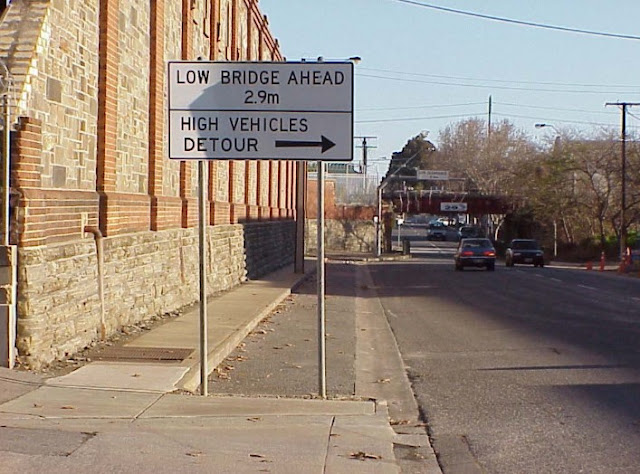One of the issues often underestimated in traffic engineering is that of vehicles' height. Low clearance bridges or overpasses cause all short of problems to traffic and transport. From major safety incidents to amenity problems to surrounding neighborhood.
Just yesterday Europe and the world was shocked with the tragic crash of a double decker bus on a low clearance bridge in Munich, Germany that left 40 young people injured, one of them severely.
It surely made me wonder; was it the low overpass or was it the high times?
That bridge had a clearance of 3.4 m which is far less than the 4.3m Queensland and Australian Road Rules general regulation hight or the 4.4 m double decker bus regulation.
That bridge had a clearance of 3.4 m which is far less than the 4.3m Queensland and Australian Road Rules general regulation hight or the 4.4 m double decker bus regulation.
This 3.4m height though, is taller than the clearance of a number of railway overpasses throughout Brisbane wider area. There are a few that are less than 3.0 m and there is even the one over Colina Street, Wynnum that has a clearance of 1.9 m.
Searching in the Internet for a list of vehicles' heights, I couldn't find a single page that all different vehicles are listed. That is because vehicle height is the one dimension that is far from standard. Truck manufacturers provide the various standard chassis and on top of them, they fit different types of truck bodies. Many of the truck bodies are custom made to fit different transport needs.
Even with container trucks, height is not standard. There are many types of containers
that can reach up to 2.86m for the high cube one. With this height even
if the container could move by itself without the need for a truck to
carry it, it still couldn't make it under some of Brisbane's rail
overpasses.
One of the major car rental companies on their truck rental website
lists every truck's height but instead of the overall height they
list just the cab height.
Most of the in-car GPS navigator systems don't have a comprehensive list of all low clearance overpasses. I am afraid that even professional truck drivers are driving around without knowing the exact height of their vehicle.
Rail infrastructure is usually very difficult to modify within a reasonable cost, especially in locations that the overpass is too close to the railway station like in Wynnum. Lowering the road surface underneath, wherever permitted by geology and storm water design, creates collateral damage to the wider area, with retaining walls creating a barrier for pedestrian movement.
The answer to these problems is usually detection systems and warning signs. Tunnel management authorities are leading the way in this field. And of course, transport planning should always try to find a suitable detour for the extraordinary transport of high loads.





This comment has been removed by a blog administrator.
ReplyDelete